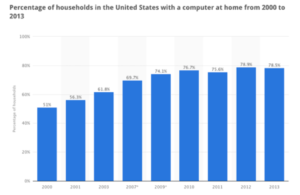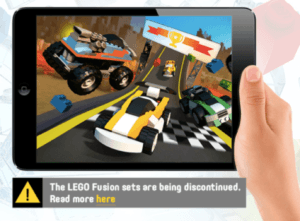LEGO – from bricks to clicks: what you missed since you last played

In 2015 Lego became the world’s largest toymaker and Lego Minifigs will soon outnumber humans. While successful at last, Lego’s rushed move into the digital age almost bankrupted the Danish toymaker.
Without doubt, Lego is one of the most successful companies of this decade: In 2015, Lego overtook Mattel and became the world’s biggest toymaker [1]. In the same year, it also became the world’s most powerful brand, before Red Bull, L’Oréal, Burberry, Rolex and Ferrari [2]. According to some sources, Lego people will soon outnumber actual people in the world [3].
While this may not seem surprising to most of us growing up with Lego bricks, it demonstrates a hugely successful turnaround after years on the verge of bankruptcy a little more than a decade ago.
Lego was founded by Ole Kirk Kristiansen in Billund, Denmark in 1932 and originally manufactured wooden children’s toys [4]. The brand name Lego comes from the appreciated version of the Danish “leg godt” which translates to “play well”. With the help of the iconic Lego brick, Lego turned into a multimillion dollar business that is still owned by the decedents of the founder. The first Lego brick was developed in the 1950s and the brick system patented in 1958.
This and other patents protected Lego’s growth for many years until the last major patent expired in 1978 [5] and competitors started entering the market. In 1991, the market entry of Mega Bloks into similarly sized plastic bricks was cause for concern as Mega Bloks quickly became the number two behind Lego [5]. At the same time the share of US households with personal computers reached 50% in 2000, enabling much greater the diffusion of digital games [6].
These two developments threatened Lego’s existence and almost led the company into bankruptcy in the early 2000s. Surprisingly, it was not the emergence of digital toys decreasing the size of the physical toy market or competitors increasing their market share within the building brick market that led to this.
Unlike other successful companies that missed the digital trend and thus became obsolete, Lego overreacted and overturned the strategy that had made it successful for decades. So afraid of being left behind, Lego diversified away from the Lego brick presuming that the brick no longer differentiated the company from competitors [7]. Anticipating the rise of digital toys, it set foot into the digital world early. However, it did so in an overly rushed manner, leaving consumers and retailers behind confused. “Rather than doing one adjacency every 3-5 years, we did three to five adjacencies every year” said Jorgen Knudstorp after becoming CEO in 2004 [7].
Under Knudstorp’s leadership, Lego once again focused its business model on adjacencies to its physical bricks e.g. by selling its unprofitable video games development activities [1]. In addition to selected divestitures, Knudstorp started “improving processes, cutting costs, and managing cash flow” which had been neglected in previous years [8]. Once the base of its operation model was back on track, a new R&D department was established to foster organic growth. According to Knudstorp “The Future Lab has really pioneered that [deep ethnographic studies of how children play] within Lego, and it hasn’t been a theoretical exercise. It’s been a real design-thinking approach to innovation, which we’ve learned an awful lot from.” [8].
One of the outcomes of this research was to develop a new line to appeal particularly to girls with a range of products, games, videos, and other activities that, according to Knudstorp has proved to be very successful [8].
But despite the successful turnaround, Lego still hasn’t fully found its place in the digital world. One seemingly innovative and heavily promoted new product called Lego Fusion that eliminated the boundaries between physical and digital by allowing children to scan their physical Lego with an app has been discontinued earlier this year [9].
To conclude, I am not convinced that its existing product lines are strong enough to allow Lego to secure its current market leader position in the long run. Focusing on brick related digital expansions was the clear way to go to enter the digital market. Eventually there will be generations of children growing up without any physical Legos and I am not sure that Lego’s digital offering will be relevant to these consumers: If you have never seen physical Lego, what do you make of say The Lego Movie? In my mind, Lego’s successful hybrid strategy will probably serve it well for another 5-10 years. Beyond that, it needs to find a business and operating model that will allow it to capture a purely digital market (while hopefully not entirely neglecting the limited demand from parents who still believe in the educational superiority of physical bricks).
758 Words
Sources
[1] https://www.ft.com/content/f03d0188-513d-11e5-9497-c74c95a1a7b1
[2] http://www.forbes.com/sites/kathryndill/2015/02/19/lego-tops-global-ranking-of-the-most-powerful-brands-in-2015/#31913c6557f5
[3] https://xkcd.com/1281/
[4] https://www.lego.com/en-us/aboutus/lego-group/the_lego_history
[5] http://www.nytimes.com/2005/02/02/business/worldbusiness/building-a-legal-case-block-by-block.html?_r=0
[6] https://www.statista.com/statistics/214641/household-adoption-rate-of-computer-in-the-us-since-1997/
[7] http://www.thelegocasestudy.com/uploads/1/9/9/5/19956653/lego_case_study_2014.pdf
[8] https://www.fastcompany.com/3040223/when-it-clicks-it-clicks
[9] https://www.lego.com/en-us/fusion
Exhibit Sources (in order of appearance)
Cover image: http://www.warnerbros.com/lego-movie
http://www.economist.com/blogs/graphicdetail/2014/02/daily-chart-8
https://www.statista.com/statistics/214641/household-adoption-rate-of-computer-in-the-us-since-1997/
https://www.lego.com/en-us/friends#/rollercoster
https://www.lego.com/en-us/fusion







One interesting LEGO product that you didn’t mention is LEGO Mindstorms. It’s a series of kits that allow kids to use software and hardware to build robots. As STEM learning takes over, there is an opportunity for LEGO to lead the way in teaching kids critical 21st century skills. On its Mindstorms site, LEGO suggests that the product can be used to “Learn to Program.” Many parents want their children to learn to code (1), so LEGO has a real opportunity to take ownership in the growing teach-kids-to-code market. The brand has been synonymous with educational toys for decades, now it’s time to bring the learning into the 21st century. LEGO already has a relevant product in Mindstorms, but it should work to make it a core offering.
(1) https://www.lego.com/en-us/mindstorms
(2) http://www.wsj.com/articles/new-ways-to-teach-young-children-to-code-1455049777
Thanks Sabine. This is a great article. So sad to see what’s happened to a childhood favorite! The article also shows clearly how if a company panics and does too much, too soon, it can really harm them. I actually think there’s a lot of value to physical toys despite where the world is heading. I wonder if Lego could keep their physical toys but integrate digital into this offering by creating an online community where kids could share their creations with other kids all over the world. I didn’t know if this existed but found that there are actually several online communities for kids (See article below). They all require the help of a parent to sign up and encourage parental monitoring, which is great. A lot of them are run by larger companies too, like Disney. They’re trying to increase demand and brand awareness among kids using digital platforms. I think this is something Lego could consider to marry their age-old physical toys with the new age of digital.
http://adammclane.com/2008/10/5-best-online-communities-for-kids/
You’re absolutely right Sabine in predicting that the hybrid strategy will not do very well. Most recently, I see Lego trying to double down on selling physical legos. Lego innovated a line of products called Lego Flexo which allows children to create objects that have flexible movements e.g. arrows. It was a promising move that might allow Lego to expand their toys into other categories and gain market share from other toy manufacturers.
You can see Lego Flexo here: https://www.youtube.com/watch?v=aL4eGLqguKc
A childhood favorite. Thanks for the update Sabine. One comment I’d like to debate with you however is LEGO’s ability to maintain its position in both the toy market, as well as a brand. I’d argue that LEGO achieving the brand status that it did in 2015 positions the company well for the future, particularly because of the structural headwinds it has faced in consumption trends of youth these days (digital vs. physical toys and games). I think LEGO will do well to position itself in both the learning market (as EmilyS mentioned), as well capitalize on product extensions: video games, theme parks, special events and maybe even an interactive entertainment center (smaller scale)
I can think of at least one reason why LEGO should not worry that much about diversifying into digital play: the fact that tangible “natural” play is developmentally very important for small children. As exciting as visual online/iPad/iPhone-type games might appear at the beginning, they still teach a limited number of skills. Physical games, in contrast, encourages imagination and exploration because it makes children engage multiple senses and also interact directly with their peers. (See here for more information: http://empowered-mom.vineyardesigns.com/moms/educational_toys/non_electronic_toys_games.shtml). We do not need to over-digitize everything in our lives, which is why I think Lego can still continue to benefit from their strong brand, as long as they are consistent in producing the fun, engaging games generations of children have known and loved.
Great, article Sabine, and I am surprised to hear that Lego found the need to transform their business trajectory in light of the digital trend. I absolutely agree with The Concerned Corker – not everything need to be digitized in our lives, in particular children’s toys. The reason why digitization has become such a prevalent phenomenon in the business world is because at the end of day, it drives efficiency and productivity, which directly affects the bottom line. Consumers’ need for convenience and accessibility ultimate propels businesses to increasingly adopt digitized processes into their work streams to better serve their customers. However in the children’s world, this need is nonexistent. Toys do not need to be digitized to serve their purpose, which is to invoke imagination and to create a fun playtime experience. While there is an increasingly number of digital toys and games, I would argue that they fulfill a completely separate set of needs, and simply cannot replace the needs that physical games can satiate.